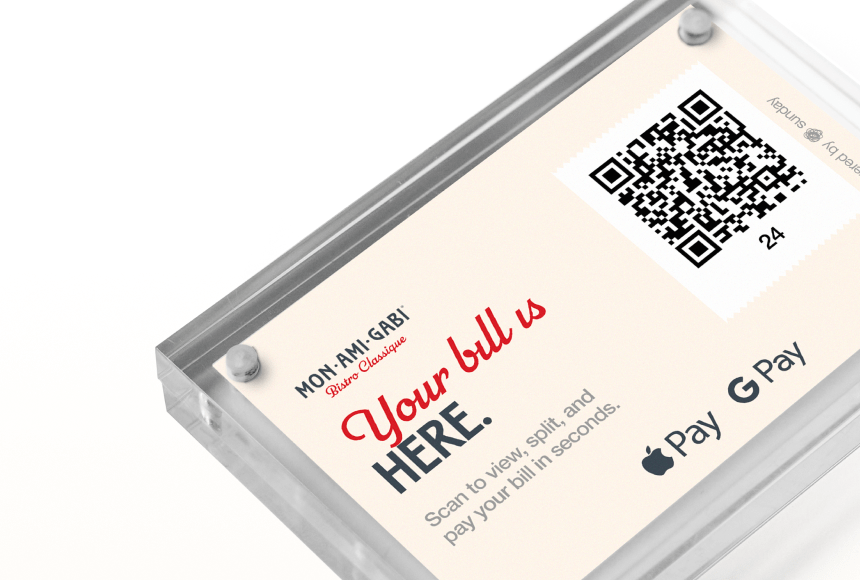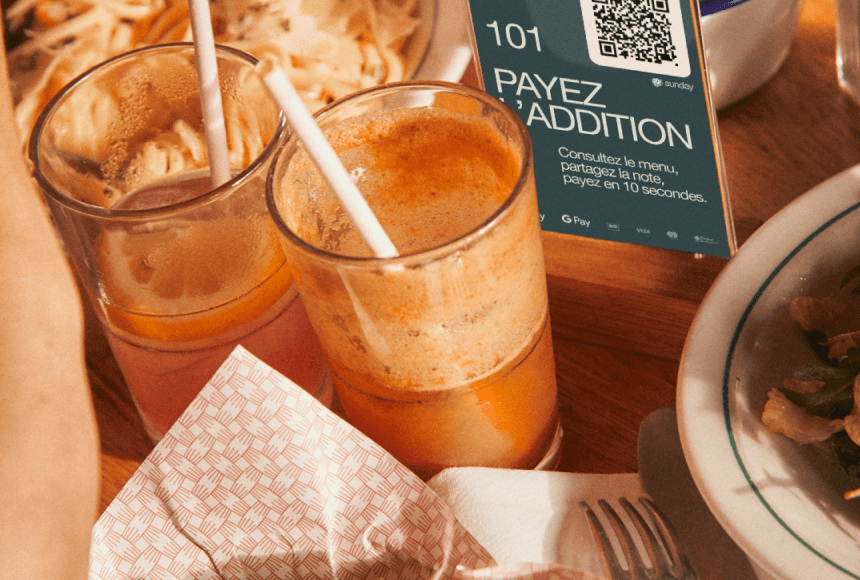
The Future of Card Readers: Key Restaurant Payment Trends in 2025
Why Smart Terminals Have Become Non-Negotiable
In the United States, what’s known in French as a “TPE” (Terminal de paiement électronique) is commonly referred to as a card reader, smart handheld, or smart terminal. Regardless of the terminology, these devices are rapidly reshaping restaurant payments. According to the National Restaurant Association, more than half of all U.S. restaurants have already integrated some form of modern payment technology—spurred by demands for contactless options, speed, and improved security.
Now, as we look ahead to 2025, the entire concept of a “terminal” is evolving beyond a static countertop device. Restaurants are adopting new features—like integrated tipping, tableside ordering, and loyalty program tie-ins—that turn card readers from purely functional gadgets into multipurpose, customer-centric solutions. Below, we’ll explore the major trends you can expect in the next few years, and how these changes could transform your guests’ experience.
1. More Mobile and Tableside Interactions
One of the biggest shifts for card readers—and the restaurant industry at large—is the move to tableside transactions. Rather than asking guests to walk to a cashier or wait for a server to retrieve a clunky credit card machine, staff bring a sleek handheld terminal directly to the table. In many cases, guests can even handle the payment themselves by tapping, dipping, or scanning a QR code on the device.
Why it matters:
- Higher Trust: Customers appreciate seeing the transaction happen in front of them, reducing concerns about lost or stolen cards.
- Reduced Wait Times: The time between finishing a meal and paying shrinks dramatically, leaving guests with a more positive final impression.
- Upselling Opportunities: Tableside devices often display last-minute offers—like dessert, coffee, or a loyalty sign-up—that guests can add with a single tap.
By 2025, expect to see more restaurants equipping servers with lightweight, user-friendly devices that let customers split the bill, select a tip, and finalize payment on the spot. This convenience is no longer a luxury but a growing norm.
2. Biometric and Contactless Security Features
As technology advances, so too do potential threats. Card readers of the future must offer robust security beyond the traditional chip-and-PIN. We’re already seeing more emphasis on biometric authentication—for instance, requiring a fingerprint or face ID on the device before completing high-value transactions.
Additionally, near-field communication (NFC) for contactless payments has become standard. Most major credit cards and mobile wallets (like Apple Pay or Google Pay) rely on NFC, allowing diners to pay simply by tapping their phone or watch. By 2025:
- Multi-Factor Authentication: Some restaurants will adopt voice recognition or short personal codes for managers approving refunds or voided transactions.
- Encrypted Wireless Connections: Expect end-to-end encryption for every step of the card reader’s communication with your point-of-sale (POS) software, limiting data breach risks.
- Offline Security Protocols: Even if the internet drops, modern terminals can securely store transaction data, preventing lost sales or untracked payments.
This blend of convenience and heightened security is key to customer confidence and regulatory compliance—especially in an era when data breaches make national headlines.
3. Unified Platforms for Ordering, Payment, and Loyalty
Gone are the days when a card reader was just for settling the check. Modern restaurants want all-in-one solutions that integrate seamlessly with online ordering, kitchen display systems, staff scheduling, and loyalty programs. This centralization cuts out repetitive data entry and provides real-time insights into sales, inventory, and labor.
In 2025, a typical smart terminal might handle:
- Tableside Ordering: A waiter or guest can tap items on the screen, and the order flows directly to the kitchen display system.
- Loyalty Enrollment: Diners can sign up for your reward program right on the device, with instant credit for their purchase.
- Suggestive Selling: Built-in algorithms recommend add-ons—like a side dish or drink—based on the guest’s order history or popular combos.
Solutions like sunday already fuse payment with user-friendly design, and we can expect more providers to follow suit. The result: a frictionless, data-rich environment that boosts revenue and refines your guest relationships.
4. Personalization Through AI and Data Analytics
Artificial intelligence has begun filtering into every corner of hospitality, and card readers are no exception. By 2025, we’ll see more card readers equipped with basic AI-driven suggestions:
- Repeat Guest Recognition: When a returning customer’s credit card is recognized (with permission), the device might suggest favorites or highlight new menu items related to past orders.
- Dynamic Pricing: Restaurants can experiment with variable discounts based on time of day, inventory levels, or special promotions, with the card reader updating in real-time.
- Cross-Promotions: Ordering a glass of red wine? The terminal might gently prompt, “Complement this with our signature chocolate cake?” The line between the checkout process and marketing merges seamlessly.
When done with respect for privacy and opt-in consent, these advanced features can make customers feel recognized and cared for—turning a routine payment into a personalized experience.
5. Emphasis on Flexible Payment Methods
Cash or card used to be the norm. Now, consumers juggle a growing list of payment preferences: digital wallets, BNPL (“buy now, pay later”), gift codes, cryptocurrencies, and more. Smart terminals must adapt to this variety to remain relevant:
- Digital Wallet Compatibility: Apple Pay, Google Pay, Samsung Pay—guests expect frictionless acceptance. A simple tap or scan is all it should take.
- QR Code Integration: Some customers may prefer scanning a code on the device with their phone to complete payment from a personal app. This synergy cuts wait times and feels contactless.
- Crypto-Friendly Options: While niche, certain restaurants may court tech-savvy or international customers by accepting stablecoins or well-known cryptocurrencies. Terminals that handle real-time conversion reassure both diners and staff.
The overarching trend is maximal flexibility. In a competitive landscape, restaurants can’t afford to turn away potential revenue because they don’t accept a guest’s preferred payment form.
6. User-Friendly Tipping Prompts
Tipping screens can be a delicate matter: you want to encourage fair gratuities without making diners feel pressured. By 2025, more card readers will adopt a balanced approach, offering clear but gentle tip prompts:
- Suggested Percentages: The device displays 15%, 18%, 20%, and “Custom,” letting customers choose quickly. Some systems will adjust these numbers based on local norms or time of day.
- Transparent Tip Distribution: People often wonder if tips go to their server or a pooled system. Future terminals might include a brief message clarifying: “Your tip supports our entire team.”
- Skip with Ease: Some diners want to leave cash or prefer not to tip. The best devices make skipping easy—no judgement or pop-ups scolding them.
When the tipping interface feels respectful yet encouraging, servers typically see higher gratuities. Combined with integrated analytics, restaurants can even track how tip suggestions affect server earnings or overall staff morale.
7. Portable “Smart Handhelds” for Large-Scale Venues
Casual cafes and fine-dining spots aren’t the only places adopting card readers. Stadiums, food halls, and outdoor festivals also demand mobile payment solutions. In large venues, staff carry small, rugged handhelds that can handle everything from scanning credit cards to printing receipts on the go.
These multi-functional devices:
- Handle High Volume Quickly: Perfect for long lines during halftime or concert intermissions, where every second counts.
- Offline Mode: Some solutions store transactions safely even if Wi-Fi is shaky, syncing data once the device regains a stable connection.
- Receipt or No Receipt: Guests can request a texted or emailed copy, cutting paper waste.
By 2025, expect more adoption in large-scale venues, with a focus on durability (devices that endure drops or exposure to the elements) and speed (fast swipes and quick taps).
8. Cloud-Based, Real-Time Management
Gone are the days of batch-processing credit card payments once the restaurant closes. Modern card readers increasingly connect to cloud-based POS systems, offering real-time updates:
- Instant Reporting: Owners or managers track sales, tips, and item-level performance from a tablet or smartphone—at the restaurant or from home.
- Seamless Integrations: The system syncs with inventory or reservation software. If you run out of an ingredient, the menu is updated instantly across all devices.
- Automated Closing: By the end of service, data is already reconciled, saving staff from manual tallies. Payment adjustments, comps, or voids are captured in real time.
Cloud-based tech accelerates business decisions, too. If your lunch rush unexpectedly soars on a Tuesday, you can add staff or restock key items midday. The result is a more agile, data-driven approach to restaurant management.
9. AI-Driven Fraud Prevention
As digital payments become the norm, so too do attempts at fraud. Restaurants need advanced layers of protection. Beyond chip and PIN, next-gen card readers might deploy machine learning algorithms that analyze transaction patterns:
- Real-Time Alerts: If a transaction seems unusual—maybe a huge tip compared to typical bills, or rapid repetitive swipes from the same card—the system flags it, requesting manager approval.
- Geo-Fencing: Terminals confirm that a given transaction is happening within your restaurant’s known location. Transactions triggered far away might indicate hacking.
- Staff Accountability: Unique logins on each handheld track who performed each transaction, reducing internal theft or accidental double charges.
This automation boosts peace of mind for both owners and guests. By detecting anomalies on the spot, the system can prevent costly chargebacks and maintain guest trust.
10. Sustainability and Paperless Trends
The environmental impact of paper checks and receipts hasn’t escaped consumer notice. In 2025, more restaurants will aim for a paperless approach, letting guests receive email or SMS receipts rather than printing them. Card readers can prompt “Receipt via text or email?” after a transaction is approved.
Why diners appreciate this:
- Eco-Conscious Choice: People are aware that every slip of paper adds to waste. Minimizing physical receipts underscores your commitment to sustainability.
- Reduced Clutter: Many guests prefer storing receipts digitally for easy expense tracking or returns, freeing them from paper piles.
- Brand Touchpoint: An emailed receipt can double as a marketing opportunity—linking to a short survey or a discount code for future visits.
From small to large steps, adopting green measures resonates with today’s conscientious diners, boosting your brand image and saving costs on printing in the long run.
11. Compatibility with QR Code Payment and Self-Checkout
A new synergy is emerging between card readers and QR code payments. Some restaurants place a code on the table, letting guests open a digital menu or pay directly on their phone. Meanwhile, servers hold a smart terminal as a backup or for those who prefer a physical device:
- Hybrid Approach: Diners can choose to scan and pay with their smartphone or ask the server to handle it on the terminal. Everyone’s comfort level is addressed.
- Seamless Integration: Both the handheld device and the diner’s phone link to the same POS. If you reorder an item on your phone, the staff sees it on their terminal instantly.
- Efficient Bill Splitting: Parties can mix payment methods—for instance, two people pay via QR code, while others tap their cards on the server’s handheld. All charges sync in real-time.
This multi-channel approach ensures your entire guest base—tech-savvy or traditional—feels at ease, removing friction from the dining experience.
12. Evolving Roles for Servers and Cashiers
With sleek card readers taking over many manual processes (like reconciling checks), how does staff adapt? Far from eliminating roles, these devices can redefine responsibilities:
- Servers as Consultants: Freed from running cards back and forth, servers devote more time to discussing specials or building rapport at the table.
- Greater Accountability: Each transaction is logged under a specific staff ID, fostering transparency in tip distribution and lowering the risk of suspicious voids.
- Upskilling Opportunities: Staff learn to handle minor tech troubleshooting or analyze real-time sales data. This can lead to promotions or cross-functional roles.
Ultimately, the human element of dining remains crucial—technology just removes routine tasks, so employees can focus on experience-building interactions, which keep customers coming back.
13. Automated Reporting for Better Decision-Making
Data is the lifeblood of modern restaurants. With advanced card readers capturing transaction details, owners and managers glean deeper insights into operational efficiency:
- Peak Hours Insight: If a surge hits from 6-7 pm on Fridays, the system can recommend adding staff or running special promotions.
- Check Metrics: You might see how quickly diners settle up after a meal or how certain tip prompt layouts affect average gratuities.
- Menu Optimization: By linking specific payment data to menu items, you see which dishes anchor the highest net sales or the largest average check size.
Armed with automated reporting, you can refine shifts, promotions, and inventory in near real-time. Smart terminals become your behind-the-scenes data collectors, fueling success with minimal manual effort.
14. Greater Emphasis on Design and Aesthetics
In 2025, card readers won’t just be functional boxes. They’ll come in sleek, ergonomic designs that match the restaurant’s brand or interior vibe. Expect touches such as:
- Customizable Skins and Colors: Large chains might apply logos or color themes so terminals blend with décor.
- Improved Displays: Crisp screens that present menu images or short animations, making the payment experience visually appealing.
- Minimal Footprint: Devices will be slimmer, and some might magnetically clip onto the side of a server’s apron, keeping counters uncluttered.
Although design may seem aesthetic, it contributes to user experience—both for staff handling the device all day and diners drawn to polished technology that feels “future-ready.”
15. A Roadmap to Future Innovation
For restaurants aiming to stay ahead, smart terminals are more than an operational fix. They’re a gateway to emerging tools like:
- Voice-Activated Ordering: Allowing staff or even guests to speak item requests into the terminal, streamlining data entry.
- Augmented Reality (AR) Menus: Some forward-thinking restaurants may let customers see 3D previews of dishes on the terminal, bridging the gap between ordering and imagination.
- Wearable Integrations: In the future, staff might use smartwatches or glasses to see real-time notifications when a table pays or requests assistance, making the handheld terminal just one piece of an interconnected system.
Once you embrace a connected approach, adding new features becomes simpler—making your restaurant agile in responding to guest expectations.
Preparing for the Next Wave of Payment Technology
Whether you call it a smart terminal, card reader, or smart handheld, the concept of a digital payment hub in restaurants is here to stay. As 2025 approaches, the lines between ordering, payment, and loyalty continue to blur. A single device in your staff’s hands (or on the table) can orchestrate the entire customer experience, from the first appetizer to the final review.
But adopting these solutions wisely requires attention to user-friendliness, robust security, staff training, and the human touch that keeps dining experiences memorable. Platforms like sunday already showcase how streamlined design and practical features can spark real improvements in service speed, tipping, and customer satisfaction.
For restaurant operators, the message is clear: embrace technology, or risk slipping behind in a highly competitive market. By prioritizing easy, secure, and data-driven tools, you’ll meet guests’ rising expectations—and build a brand known for convenience, personalization, and efficiency.
The payment terminal to make your operation simpler.
Connected to your POS, we offer the only payment terminal specifically designed for restaurants.




